- Entertainment
- Events Sports Podcasts Better Planet Vault Mightier Autos Newsletters Unconventional Vantage Experts Voices
- Subscribe for $1
- Better Planet
- Newsletters
- Unconventional

Russian Tank Fires on One of Its Own Troops, Video Appears to Show
Footage has emerged that appears to show a Russian tank firing on one of its own soldiers from almost point-blank range in Ukraine.
The video was posted on Ukrainian Telegram channel Extreme Tourism Company, which has 2,200 subscribers, and credited to Ukraine's 67 th Mechanized Brigade.
Russian troops have largely succeeded in capturing the Donbas city of Bakhmut, following months of fighting, though Kyiv denies it has lost control entirely. Ukrainian intelligence chief Maj. Gen. Kyrylo Budanov said he expects his country to launch a widely anticipated counter-offensive "soon," in an interview with Japanese broadcaster NHK.
In the 54-second Telegram footage, which was first posted by Extreme Tourism Company on Wednesday, a tank can be seen advancing through a shell-cratered landscape. After about 15 seconds the tank stops and fires a shot from close range at a soldier who is walking away from it through a wooded area. The shell explodes near the soldier throwing up a cloud of dust, meaning its not clear if they survived.

In an accompanying post Extreme Tourism Company attributed the footage, which appears to have been filmed from a drone, to Ukraine's 67 th Brigade. They claim both the tank and soldier were Russian, commenting: "Raska (an offensive term for Russians) is a village of fools.
"The tanker did not figure out that he was near his positions, and the orc clearly did not expect this from his tankers!"
Russian soldiers are widely referred to as orcs in Ukraine.
The footage was also shared by the much larger Ukrainian Tpyxa Telegram channel, which has more than 2,700,000 subscribers. It sarcastically said of the footage: "Great job—Keep it up!"
Telegram has been widely used to document and comment on the war in Ukraine, by both Russian and Ukrainian users.
Newsweek has not been able to independently verify the footage's authenticity. Both the Russian and Ukrainian ministries of defense have been contacted for comment by email.
Earlier this week soldiers from two pro-Ukrainian Russian paramilitary groups, the Freedom of Russia Legion and Russian Volunteer Corps, briefly crossed the border and captured a number of villages in Russia's Belgorod region, before retreating.
- Russian sphere of influence crumbling after Ukraine invasion, polls show
- Patriot missile success in Ukraine has shocked even the Pentagon—Kyiv
- Fire at Russian Defense Ministry sparks speculation
In a video message, released to coincide with the attack on Monday, a Freedom of Russia Legion soldier said the group hopes to overthrow Vladimir Putin 's government.
He said: "We are Russians like you. We want our children to grow up in peace and be free people so that they can travel, study and just be happy in a free country."
The soldier described Putin's Russia as "rotten from corruption, lies, censorship, restrictions on freedoms and repression."
On Thursday Yevgeny Prigozhin , commander of the Russian mercenary group Wagner, announced his troops will withdraw from Bakhmut by June 1 , and be replaced by regular Russian forces.
He commented: "We'll hand over positions, ammunition, everything including dry rations, to [Russian] troops."
Wagner has been heavily involved in the battle for Bakhmut since the summer of 2022, with Prigozhin claiming earlier this week that the group had recruited 50,000 prisoners into its ranks, of which about 20 percent have been killed.
About the writer
James Bickerton is a Newsweek U.S. News reporter based in London, U.K. His focus is covering U.S. politics and world politics. He has covered the intersection between politics and emerging technology, such as artificial intelligence. James joined Newsweek in July 2022 from LBC, and previously worked for the Daily Express. He is a graduate of Oxford University. Languages: English. Twitter: @JBickertonUK.
You can get in touch with James by emailing [email protected]

- Newsweek magazine delivered to your door
- Newsweek Voices: Diverse audio opinions
- Enjoy ad-free browsing on Newsweek.com
- Comment on articles
- Newsweek app updates on-the-go

Top stories

Do Not Disturb: Mobile Phone Ban Sweeps American Schools

New Georgia Voting Rules Could Create 'Nightmare Scenario': Analyst

Kamala Harris Gets a Boost From Nikki Haley Campaign Leader

JD Vance's Springfield, Ohio 'Challenge' Called Out With Key Fact
- Work & Careers
- Life & Arts
Extreme tourism: ‘If it was safe, that’s not an adventure’
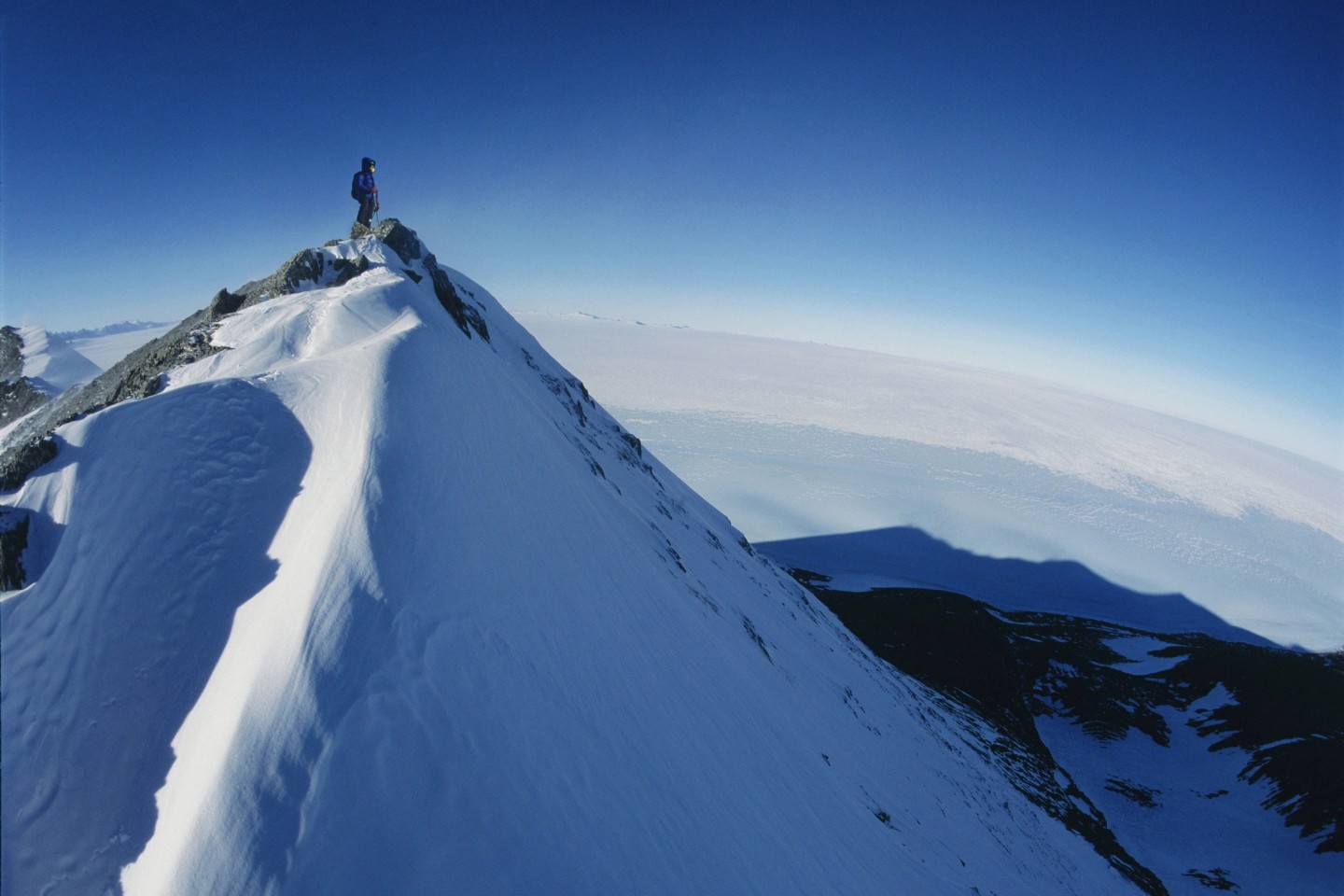
- Extreme tourism: ‘If it was safe, that’s not an adventure’ on x (opens in a new window)
- Extreme tourism: ‘If it was safe, that’s not an adventure’ on facebook (opens in a new window)
- Extreme tourism: ‘If it was safe, that’s not an adventure’ on linkedin (opens in a new window)
- Extreme tourism: ‘If it was safe, that’s not an adventure’ on whatsapp (opens in a new window)
Tom Robbins , Simon Usborne and Oliver Barnes
Roula Khalaf, Editor of the FT, selects her favourite stories in this weekly newsletter.
Tomaž Rotar knows a thing or two about life and death in extreme environments. In February 2021, the Slovenian oral surgeon was sitting inside a cramped tent 7,300m up K2, the world’s second highest mountain. More than 20 climbers had gathered in the dark on the snowbound ledge, arriving at the camp in worsening winds and temperatures that were already below -30C.
To stand a chance of reaching the summit as the weather window they had been chasing began to close, they would have to set off again almost immediately.
Most of the climbers there that night did the sane thing; they sat tight and descended at dawn, many swallowing the fact that they had paid guiding companies at least £20,000 for a chance to reach the summit in winter, a feat that had been achieved for the first time only weeks earlier. Others felt moved to step back into the darkness and attempt what they had flown halfway around the world to do.
Rotar was among seven climbers who made the decision to go on. He only turned back hours later when he came across an unexpected crevasse. Three other climbers managed to get across it, and continued. When they failed to return, a frantic search gripped the world’s media as military helicopters and even a fighter jet scoured K2.
All three men died that night. It would be months before their frozen bodies could be found. As Rotar has followed news updates about the Titan submersible this week with a familiar feeling of dread, he has been reflecting on the calculations wealthy adventurers make when they face that vital decision: do we stay, or do we go?
“It’s the same kind of people who feel the same kind of draw, whether it’s to go deep under the sea, or to climb very high, or to run very far,” he says. “It’s a kind of sickness, like a venom in your veins that makes you want to go. Because you want that beautiful feeling that comes when the danger is over and you know you have achieved something. And then you don’t even know how you lived before that, so you go back and you do it again.”
At the extreme and often prohibitively costly end of the travel industry, a niche has grown to meet demand for variations on that same feeling. From the oceans, to the mountains, to polar ice sheets, to active volcanoes — and now the vast expanse of space — people are increasingly prepared to pay small fortunes in pursuit of big, sometimes dangerous dreams.
Even the South Pole — which, after Scott’s ill-fated visit in 1912, went unvisited by humans until 1956 — is now offered in tourist brochures. The US Amundsen-Scott South Pole station is shadowed by another facility, about half a mile away: a tourist camp that welcomes visitors with a sign announcing “the world’s southernmost resort”. Antarctic Logistics & Expeditions, which runs the camp, offers a range of ways to get there, including the “South Pole Overnight” trip at $65,000 — guests simply fly there and back (and are presented with a certificate on their return).
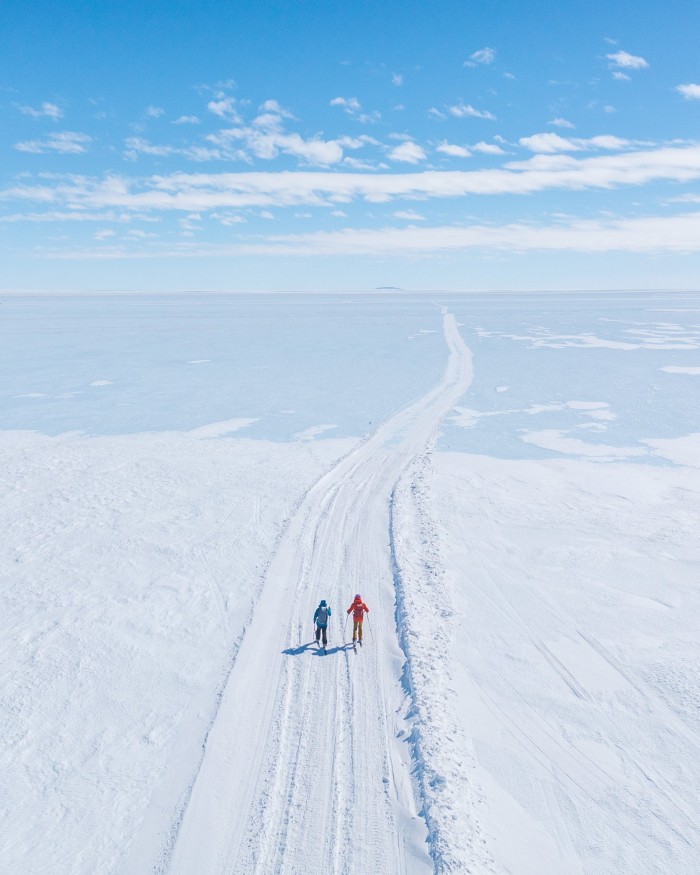
Interest in visiting Antarctica — the world’s coldest, highest, windiest continent — is surging, with the large majority of people arriving via cruise ships and landing in small boats. The number coming ashore doubled from 26,000 in the 2014/15 austral summer season to reach 55,000 in 2019/20. (Data from the International Association of Antarctica Tour Operators also records some of the activities they undertook: the most recent season saw tourists go stand-up paddleboarding 598 times, snorkelling 1,661 times, snowboarding 766 times and making 4,217 dives in submersibles.)
As with other areas of the “extreme tourism” world, tour operators are increasingly blurring the lines between holidays and expeditions. As well as fly-in trips to the South Pole, ALE offers a range of itineraries that casual observers would assume were the preserve of professional explorers. Want to ski from the edge of the continent to the Pole, a 60-day epic, battling temperatures down to -30C? Just head to the ALE website and, if you can manage the $85,000 price tag, click the “book now” button. The trip will be led by an experienced guide (though it’s up to you whether you mention that in your press release and Insta-posts).
Particularly popular is the “ski the last degree” expedition, where guests are dropped by plane 69 miles from the Pole (one degree of latitude), then trek there on skis over about five days, giving those on a tight schedule the flavour of a classic polar crossing. According to IAATO, numbers taking part in the $75,000 trip tripled in the three years to 2019; those interested can head off on December 7 or 14, or January 4 next year.
“We push our clients as far as they want to go, from abseiling to zip lining to getting a taste of what it’s like being a polar explorer,” says Patrick Woodhead, a record-breaking Antarctic adventurer and founder of the luxury Antarctic operator White Desert.
Starting in 2005 with three tents and two clients, White Desert now runs three camps, each for 12 guests, offering cocktails and chef-prepared meals, a yoga pod, sauna and library. Transport options include a Gulfstream private jet (a service that Hamish Harding, one of the five people who died on the Titan submersible, was involved in setting up); clients typically pay around $100,000 per visit. “I think that this kind of travel is exactly what people are looking for,” says Woodhead. “When people come to Antarctica, they are disconnected from their phones . . . they’re in an otherworldly situation and environment and that very much changes people.”
Though tourism is growing more normal in Antarctica, risks remain. The US Coast Guard is currently carrying out an investigation after four cruise-ship tourists were killed in three incidents at the end of 2022. Two died after an inflatable boat capsized, one when a “rogue wave” hit the ship, and another fell and hit his head in rough waters.
Yet one of the odd things about extreme tourism is that risk seems to attract rather than deter customers. Just two days after a volcano erupted on White Island off New Zealand in 2019, killing 22 people, a boat guide in Whakatāne, the town closest to the volcano, told reporters that he had begun receiving new inquiries from tourists who wanted to go there. One woman wanted to see White Island close up “to feel the fury”.
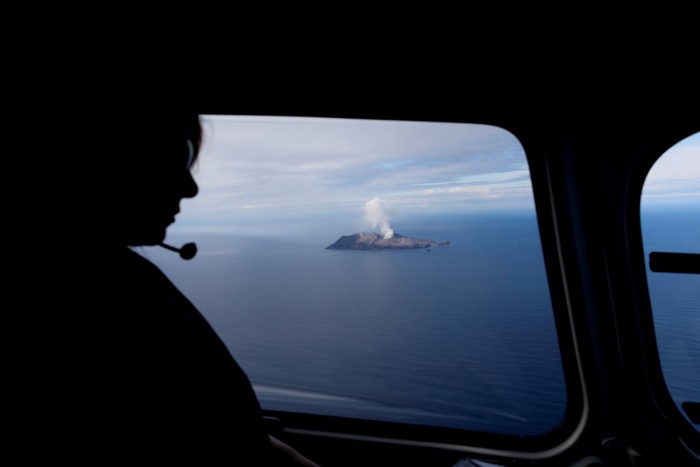
“It’s the same kind of thing that the Romantic poets talk about when they talk about the sublime in nature, the spectacles that take us out of ourselves and transcend the day-to-day human experience,” says Amy Donovan, a geographer and volcanologist at Cambridge university who has watched demand grow ever higher for proximity to spewing ash and lava. When Fagradalsfjall erupted in Iceland’s Reykjanes peninsula in March 2021, more than 350,000 people flocked to the site over the following 10 months.
After two people died in the Clipper Round The World yacht race in 2015/16, applications increased. When the celebrated US extreme skier Doug Coombs was killed in 2006 in an accident in La Grave, France, an event reported at the time as “like Superman dying”, guides noticed an uptick in inquiries from American tourists wanting to ski there.
Disaster also sells in the Himalayas. The deadly 2021 winter season on K2 — which claimed the lives of two climbers in falls, as well as the three who were lost near the summit — only increased demand for attempts on a mountain that is far more dangerous than Everest. Last summer, about 200 people reached the summit of K2, more than triple the previous record.
“People want to climb Everest because it’s dangerous and involves risk,” says Lukas Furtenbach, an Austrian mountain guide specialising in premium expeditions to Mount Everest (his packages cost up to $217,000, including personalised, professional-level video and photography). “If nobody died and it was 100 per cent safe, that’s not an adventure and I think demand would decrease.”
This year’s Everest season saw a record number of climbers — and a record number of deaths, 17. Furtenbach, whose clients all safely reached the summit, is increasingly concerned about what is happening when money, ego and the human urge to seek thrills collide in dangerous places. “I would say 14 of these deaths could have been avoided with very simple safety protocols,” he says. “Four of them were clients who went missing on summit day. Other people ran out of oxygen. These things should be impossible, and it’s happening because operators are not regulated.”
Not all extreme travel involves physical exertion. Woodhead, the White Desert founder, is this weekend in Equatorial Guinea, speaking at the inaugural “Most Traveled People” conference. The event caters to “competitive travellers”, a rapidly expanding group who attempt to visit as many places as possible on Earth, logging their visits online to climb up the league tables. Having decided the 193-long list of UN-recognised countries was too easy to complete, enthusiasts have divided the world further — MTP’s list now runs to 1,500 countries, regions, territories, dependencies, island groups and so on. (Currently top of the leaderboard is Harry Mitsidis, 51, who has reached 1,362 of them).
MTP is not alone. Since 2009, the Extreme Traveler International Congress has run meetups for tourists wanting to go beyond the brochures. Venues have included Baghdad, Mogadishu and Rockall, a granite islet in the north Atlantic.
“I think there’s a growing awareness that it’s possible to get to these kind of places,” says James Willcox, whose company Untamed Borders offers trips to destinations including Afghanistan, Syria and Yemen and has organised events for ETIC. “Previously, if a destination wasn’t in the Thomas Cook brochure and there wasn’t a Lonely Planet guidebook, people just had zero information. Now it is fairly easy to find out about anywhere online, and social media has this normalising effect — once you start looking, you see that other people are going, however unlikely the destination.”
Virgin Galactic is due to launch its first commercial space flight next week. Already 800 people have bought tickets, which now cost $450,000
The drive to tick boxes and complete defined challenges runs through much extreme travel. As reaching the “seven summits” (the highest mountain on each continent) has become common, adventurers have strived for the “explorer’s grand slam” (the seven summits plus North and South Pole), or even the “explorer’s extreme trifecta” (the highest and lowest places on Earth, Everest and Challenger Deep in the Mariana Trench, as well as space). A new generation is now rushing to climb all 14 of the world’s 8,000m peaks, often using extensive helicopter support to do so. Critics have pointed out that the approach creates a small number of “honeypot” objectives, while ignoring less well-trodden paths.
The wider phenomenon of buying adventure has long precedents, says Leo Houlding , a professional climber with a string of groundbreaking expeditions to his name. “Since the beginning of exploration, wealthy people have patronised and paid to join expeditions,” he says. “In the so-called golden age of European alpinism, the peaks were being climbed by rich Britons using hired local guides — some were probably good climbers, others were probably paying to go so they could dine out on it.” Nevertheless, the trend has “exploded” in the past decade, he says.
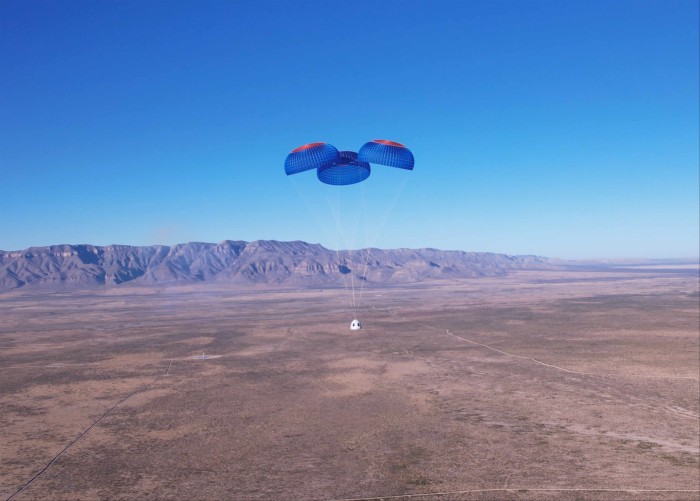
Space offers the lure of a new frontier. Virgin Galactic is due to launch its first commercial space flight next week — a two-hour experience that will reach about 55 miles above the Earth’s surface. Already 800 people have bought tickets, which now cost $450,000. Meanwhile, the Jeff Bezos-owned Blue Origin rocket reaches 62 miles in a flight of just 11 minutes; since its first crewed flight in 2021, passengers have included the Star Trek actor William Shatner, the undersea explorer Victor Vescovo and Hamish Harding.
A more leisurely option is Space Perspective, an eight-person capsule that will be carried to about 19 miles (the stratosphere, rather than space) beneath a balloon. Guests are promised “No rockets. No g-force” but rather a gentle “meticulously crafted” six-hour flight “complete with a meal and cocktails”. The company hopes to launch late next year, tickets are already on sale at $125,000 per head.
Many of the operators are developing tourism and commercial space travel in tandem, and extreme travel increasingly cleaves close to science and conservation. Whereas White Desert’s Woodhead started his company by hitching a lift on a Russian cargo plane taking scientists to Antarctica, he says his planes now deliver about 250 scientists to the continent each year, the same number as his high-paying tourists. Original Travel is currently offering a £52,000-per-person trip to Botswana in which tourists will help with the release of a dozen relocated rhinos.
Jimmy Carroll of tour operator Pelorus recently organised a trip for a wealthy family that involved chartering a yacht with an on-board helicopter to Antarctica. At the client’s request, Carroll organised the charter of a second yacht, with a second helicopter, to accommodate a team of research scientists who would also teach the client’s 12-year-old daughter.
Pelorus offers access to submersibles too, of the sort that have become de rigueur aboard expedition superyachts — the increasingly in-demand vessels designed to access the harshest seas without sacrificing comfort. Some of Carroll’s clients recently chartered U Boat Navigator, a 24m yacht which sleeps six and is equipped with two submersibles. Both are built by Triton, whose underwater vehicles, which cost up to $40mn, have been used to film the BBC Blue Planet series. The Florida company was given a boost last year when it welcomed two new investors: the billionaire American hedge fund manager Ray Dalio and James Cameron, the Titanic movie director and submariner.
“People are intrigued by the fact that 70 per cent of the world is covered by water and we have seen very little of it,” Carroll says. “And I think the likes of David Attenborough ’s programmes have definitely helped spark imaginations.”
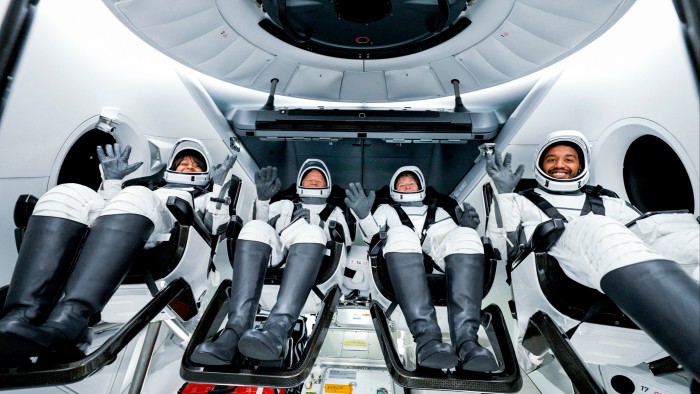
Perhaps the most extreme tourist of all splashed back down to Earth last month after an eight-day visit to the International Space Station. John Shoffner, 67, former chief executive of the fibre-optic cable company Dura-Line, was one of three astronauts who had bought places on Axiom’s second trip to space; the company hasn’t said how much they paid but previously reported ticket prices of $55mn. Like many adventurers, Shoffner has form across multiple disciplines: he takes part in 24-hour car races at Germany’s Nürburgring, skydives and BASE-jumps and has raced across America by bike without support.
Why does he do these things? “Well, they’re fun,” he says . “They help you find your edge — I would say your limit, but you don’t really want to find the limit.”
Find out about our latest stories first — follow @ftweekend on Twitter
Letter in response to this article:
Risking death at the ends of the earth costs us all / From Chris Hunter, Farnham, Surrey, UK
Promoted Content
Follow the topics in this article.
- Life & Arts Add to myFT
- Travel Add to myFT
- Adventure holidays Add to myFT
- Antarctica Add to myFT
- The Weekend Essay Add to myFT
Comments have not been enabled for this article.
- Security and Defense
- Authoritarian Threats
- Technology and Innovation
- Our Fellows
- State of the Alliance
- Transcripts
- Latest Commentary
- Comprehensive Reports
- Europe’s Edge
- Transatlantic Tech Policy Tracker
- Behind the Lines
- Work With Us
Extreme Tourism+? Visit Ukraine
The situation in Western and Central Ukraine has for now stabilized; a trip to Kyiv provides those interested in international affairs with a unique opportunity.
Back from a two-week visit to Kyiv, I recommend those interested in history and politics to visit Ukraine’s central and western regions. Be in no doubt, this carries some risks, be your trip private or professional. But going to a war-torn country is more than extreme tourism; it allows a close view of what’s happening and shows solidarity with a people enduring Europe’s most important war since 1945.
First, a health warning. Above all, Russia is unpredictable in its approach to Ukraine. Those Ukrainian regions that are today relatively peaceful may tomorrow be under attack. Visitors might, as has happened already to some foreign civilians, be killed or maimed. Worse, Russia may, at some point, decide to use radioactive material or chemical agents, as it did on British soil in 2018 , to kill presumed enemies of Putin in Ukraine. If you go there, you could become shot, wounded, poisoned, infected, or/and trapped.
Yet my feeling in Kyiv in late July and early August was that the likelihood of being involved in a road traffic accident was much higher than being hurt by shrapnel or dying in a collapsing house. In fact, wartime Kyiv was surprisingly similar to the peacetime Ukrainian capital where I lived for 17 years. To be sure, the mood and rhythm of the city are different from pre-war times. There is more poverty visible on the streets, a curfew between 11 p.m. and 5 a.m., and the occasional wailing siren to contend with. But explosions and killings are rare exceptions in Kyiv as well as in Western Ukraine. Ukraine’s capital enjoys a good air defense system that takes down most Russian missiles trying to reach the city. And while one can feel the tension in Kyiv, as everywhere in the country, the actual war is absent from the city. Instead, Kyivans are trying to recover some normality and even certain daily joys.
The public transportation system is less heavily used than it was, but the metro works during the daytime with a limited schedule (and stops during air raid alarms.) Taxi services are fully functional again. Prices in the national currency, the hryvnia, have risen sharply since the start of the war. However, foreign visitors benefit from favorable exchange rates for hard currencies and will thus find most services and goods to be relatively cheap. Banks, money machines, private hospitals, pharmacies, and most shops operate in largely regular ways. The streets in the city center are filled with people and cars. Flowers, drinks, and ice cream are sold on popular pedestrian routes.
Most hotels and some daytime bars operate as normal. Numerous websites offer affordable rooms and flats across the city. Restaurants are open again. Many serve inexpensive high-quality meals, a variety of wines, liquors, and cocktails, as well as imported and locally brewed beers. In particular, the dozens of Georgian restaurants that have in recent years opened across Kyiv continue to serve extremely good Caucasian cuisine for relatively small sums. Several beaches on the wide Dnipro River are open for free-of-charge swimming. Fishing is as popular as ever. My traditional Thai Massage shop was open again, although the original Thai masseurs have been replaced by local specialists.
Whereas gasoline was a problem during the first months of war, supplies now seem stable. After shortages in March and April, the range of choice in supermarkets has largely recovered and now offers again almost everything needed for daily life. Police and soldiers are numerous on the streets and some parts of the government district as well as the two central metro stations in downtown Kyiv are closed off. You may occasionally be asked to show your passport at a checkpoint. But the atmosphere is friendly and semi-relaxed. Summertime Kyiv is no longer a raving party city, as it used to be until 2014 when Russia’s war on Ukraine started. Yet, it is a European capital especially worth visiting and exploring today.
For those interested in geopolitics, historical matters, Eastern Europe, military affairs, and international relations, Ukraine has become a unique travel destination. One can observe history in the making and see at firsthand one of the most consequential post-war confrontations of the continent playing out. Nevertheless, in cities like Lviv and Kyiv, one continues, at the same time, to enjoy most of the joys of modern life. Visitors are going to the locations of Russia’s war crimes near Kyiv, at Bucha or Irpen, and Kyiv’s city center has several open-air exhibitions related to the war. This includes an assembly of destroyed Russian war machinery, with a tank, self-propelled howitzer, and APCs displayed in front of the foreign affairs ministry building on Mykhailyvskiy Square.
Of course, reaching the Ukrainian capital is harder, as there is no longer any civil air traffic However there are several train and bus routes operating from cities like Warsaw and Prague. You may have to do a stopover stay in an East-Central European city before getting on a train or bus directly headed for Kyiv. This underlines that visiting Ukraine is no longer plain fun; it is travel the old-fashioned way. However, if you want personal experience of a European country bravely and often humorously struggling to secure its future, there is nowhere like it.
And unlike most other trips you undertake it has some larger meaning. By visiting Ukraine, you show the world what you stand for. By going to Kyiv, you bring some hope, support, and money to the Ukrainians. Your mere presence will signal to East Europeans that Ukraine’s cause is not lost. And while Ukrainians, Belarusians, and Poles may not see you as a hero — they have bigger problems to deal with — they will be grateful that you have taken a position and took some personal risk to express it. Last but not least, Putin & Co. will not be amused.
Dr. Andreas Umland studied political science and history in Berlin, Oxford, Stanford, and Cambridge. He has been a lecturer at the Department of Political Science at Kyiv-Mohyla Academy (NaUKMA) since 2010 and an analyst at the Stockholm Centre for Eastern European Studies (SCEEUS) of the Swedish Institute of International Relations (UI) since 2021.
Europe’s Edge is CEPA’s online journal covering critical topics on the foreign policy docket across Europe and North America. All opinions are those of the author and do not necessarily represent the position or views of the institutions they represent or the Center for European Policy Analysis.

2024 CEPA Forum Leadership Awards Dinner
Turning Leadership into Action.
Related Articles
Related issue tags.

Shooting Tour Kiev, Shooting Range, Tour Kiev, Tank Driving, Chernobyl tour, Trip, Ukraine, kiev chernobyl tour, soviet, travel, chernobyl adventure, chernobyl excursion kiev, tours, Tank driving range, driving Tank Ukraine, shooting, driving tank, chernobyl, Army tank, Nuclear, Missile, Base, Ballooning, Airplane, Piloting, military, English, booking, American, Sniper, private, tours, experience, weapons, exclusive, Book, Adventure
Shooting tour kiev, chernobyl trip, tank driving, shooting tour kiev, chernobyl tour, chernobyl tours, tours, nuclear missile base, tank driving range, driving tank ukraine, shooting, driving tank, chernobyl, army tank, driving experience, tank driving kiev ukraine, book, adventure, travel ukraine, fly balloons, airplane piloting, tank, driving, chernobyl, tours, kiev, ukraine, adventure, tourism, book, transfers, location, experience, lunch, range, base, drinks, chernobyl, tours, shooting tour kiev, tours tank driving, shooting tours, chernobyl, chernobyl tours, adventure ukraine, chernobyl tour, transfers to location, chernobyl excursion kiev, shooting, driving tank, chernobyl, rounds tours lunch book duration missile base experience includes tourism soviet kiev, shotgun steyr activities bullets glock pistol magazine drive ak airplane piloting nuclear travel air trip military range riding personally fly btr emotions welcome zone hot offer weapons special tripadvisor brdm unique sellers rocket, chernobyl tour, tours, travel ukraine, missile base, btr, shooting, driving tank, chernobyl, adventure, chernobyl excursion kiev, special experience, chernobyl adventure, piloting airplane, military tours, tourism air, emotions, fly, lifetime, mezhigiria, book for more, get, blog, to, bookings, contact, range kiev, nuclear, tank, driving, chernobyl, tours, kiev, ukraine, adventure, tourism, book, transfers, location, experience, lunch, range, base, drinks, shooting, driving tank, chernobyl, tank, driving, chernobyl, tours, kiev, ukraine, adventure, tourism, book, transfers, location, experience, lunch, range, base, drinks, shooting tour kiev, shooting tour, tank driving tour, chernobyl tour, adventure tours, tank driving, ukraine tours, tank driving experience, drive a tank, tank experience, shooting range kiev, drive a tank experience, ukraine trips, tours in ukraine, range, kiev, ukraine, trip, airplane, ballooning, piloting, nuclear, missile, base, book, adventure, chernobyl travel, best tours and experiences in kyiv.
We give emotions - you get experience! Take the unique chance to get the most extreme, pleasuring and adventurous experience. These are the emotions you will never forget.

Chernobyl and Pripyat tour
The famous Chernobyl Exclusion Zone

Kyiv Shooting range tour
Agh, that sweet gunpowder smell...
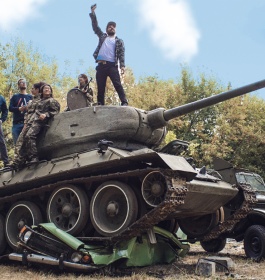
Tank driving experience
Ride & Drive

Museum of Strategic Missile Forces
Quite recent history, by the way ;)

The mansion and the Gardens

Fly with us!
Best sellers
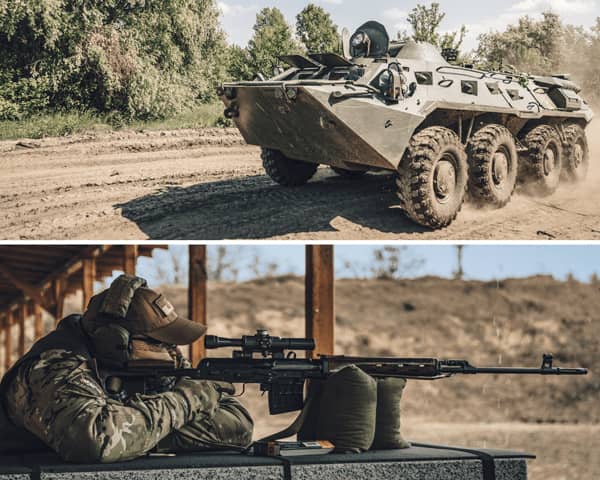
Tank Riding + Shooting
Price starts from: $270 (for group of 5 people)
Beverages (coffee, tea, water, beer)
English speaking guide included.
Transportation:
Door-to-door transportation

Tank Riding + Shooting + Chernobyl Tour *
Price starts from: $370 (for group of 5 people)
Beverages (coffee, tea, water, beer), lunch in Chernobyl
Door-to-door transportation for shooting and tank tour; pick-up from gathering point to Chernobyl
*IMPORTANT:
This hot offer applies only if you book 10+ days in advance
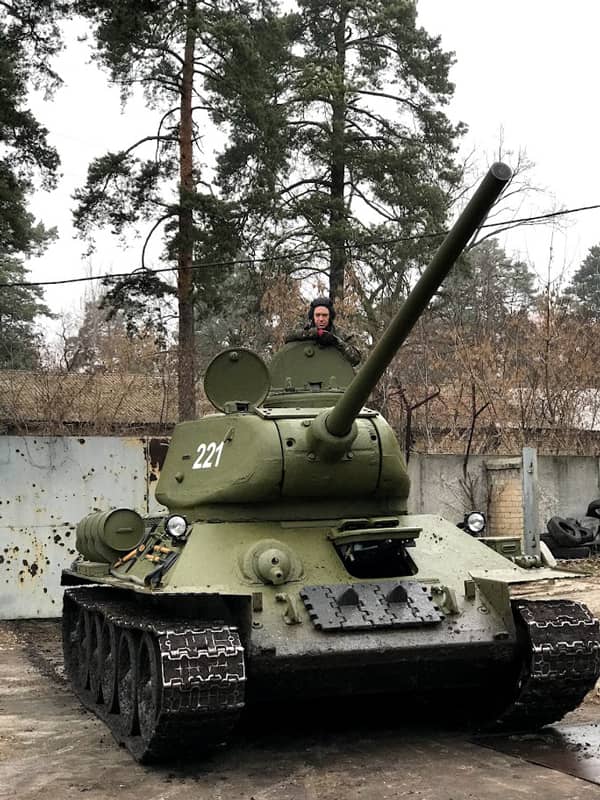
Drive a Tank T34
Price starts from: $550 (for group of 5 people)

MT-LB & Shooting
Tank Tour includes:
· MT-LB Riding and Driving personally
Shooting Tour includes:
· Steyr AUG
· Glock-17 pistol
Magazine: 50 bullets
Food: Lunch and drinks / beverages included
Duration: 10 AM - 6 PM (8 hours)
Transfers to/from tour location are included.
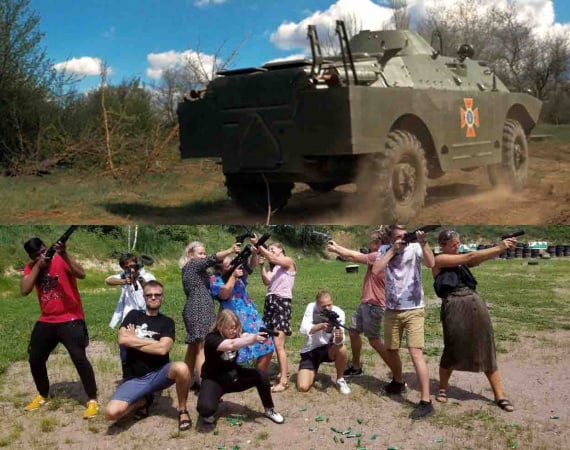
BRDM-2 & Shooting
Tank Driving Tour includes:
· BRDM-2 Riding and Driving personally

BTR-80 & Shooting
Tank Tour includes :
· BTR-80 Riding and Driving personally
Our benefits
Tripadvisor reviews.
Would you rate us on TripAdvisor?
Amazing Experience
If you're considering this or any other tour we couldn't recommend them enough based on our fantastically positive experience today. Our guide Nick was super friendly and informative throughout the whole day. The shooting range was huge and had a wide selection of guns for usage, with the option of additional guns/bullets for adding to the experience if desired (my friend made good use of this option, shooting an additional 3 guns as well as the 3 guns included in our purchased package) and the experience was throughly enjoyed by us both. Staff at the range were also incredibly friendly and helpful, as well as supportive for us being first time shooters (especially for me due to my small size, no match for an AK-47!!). The area was clean and had all the required facilities (i.e. bathroom, coffee machines etc.) so was ideal for the 2-3 hours spent there. Transport to and from our hotel was included and Nick was super knowledgeable about the areas and sights we passed to and from the range, which gives an additional edge of information when showing the photos to our family and friends back home. Thanks again to the whole team for a brilliant experience, definitely one to remember!! ☺️☺️
Brilliant experience from start to finish
Brilliant experience from start to finish, we were greeted by our tour guide Sergy who picked us up from our hotel gave us a tutorial at the shooting range and because it was our first time in Kiev he gave us our own private tour of all the famous sites around the city. Very friendly professional service and we would highly recommend. Dan + Beth
Great Shooting Range. Top Service. Highly Recommend
We booked last minute. The trip included private transport to and from the range. The range itself is huge. They claim its the biggest range in Europe. The staff are very professional and on hand to advise and assist where required. Like in any good range safety was a high priority. They have a huge choice of firearms. For those who fancy their abilities at long range, they have ranges over 1000 meters in lengths. They had a APC on site. It was a real experience to drive it. . The Adventure tour company were pleasure to work with. They offer many different excursions and were happy to tweak and customise our trip to suit our needs. We will certainly be back. Thanks for a great day out.
Amazing afternoon!!!
This has to have been the best afternoon I’ve had out! Our guide Sergei was friendly, informative and above all funny....got to experience 3 different guns on the biggest gun range in Europe. Not only that but he recommended and booked 2 great meals out and took us on a sightseeing tour. Can’t recommend highly enough, book with these guys I promise you won’t regret it!

Our Partners

Adventure Tours TEAM
Adventure tours in Ukraine is a young team of professionals with a background in the tourism and service sectors. We are working to provide experiences in emerging niche fields of tourism in Ukraine such as military and extreme sports tourism. Our number one goal is to provide clients with rewarding experiences.
We would like to demonstrate how the might and genius of military hardware and technology can be harnessed to give visitors a fun and amazing time. We want to develop Ukraine"s potential as an attractive destination for tourists from all countries.
Ukraine’s economy is growing dynamically, and is riding a wave of ever closer integration with the European Union. Our dream is to participate in this exciting process as we develop tourism in Ukraine. Adventure tours in Ukraine has grown from modest beginnings in 2015 to became an important player in international tourism, with partners in Japan, China, the Middle East, the U.S., the U.K., Italy and Israel.
For 3 years we managed to visit such international exhibitions as New York Times Travel Show (New York, USA), ITB (Berlin, FRN), COTTM (Beijing, PRC), IFTM (Paris, France), WTM (London, United Kingdom).
Media outlets like BBC and CNN also use our services, and our company has also proven itself to be a reliable and efficient partner in the field of domestic tourism to Ukrainians.
______________________________
*All activities include:
- Guidance of professional instructors
- English speaking guide always by your side
- Return transfers to/from Tour location
- All tours include drinks (water, tea, coffee)
Latest Blog Posts

The history of the Glock pistol

Top 5 reasons to visit Chornobyl now

- Booking and payment
Manager's working hours: Mon - Fri: 9:00 - 18:00 Kyiv time (GMT+3)

Extreme tourism in Ukraine: feel the adrenaline yourself
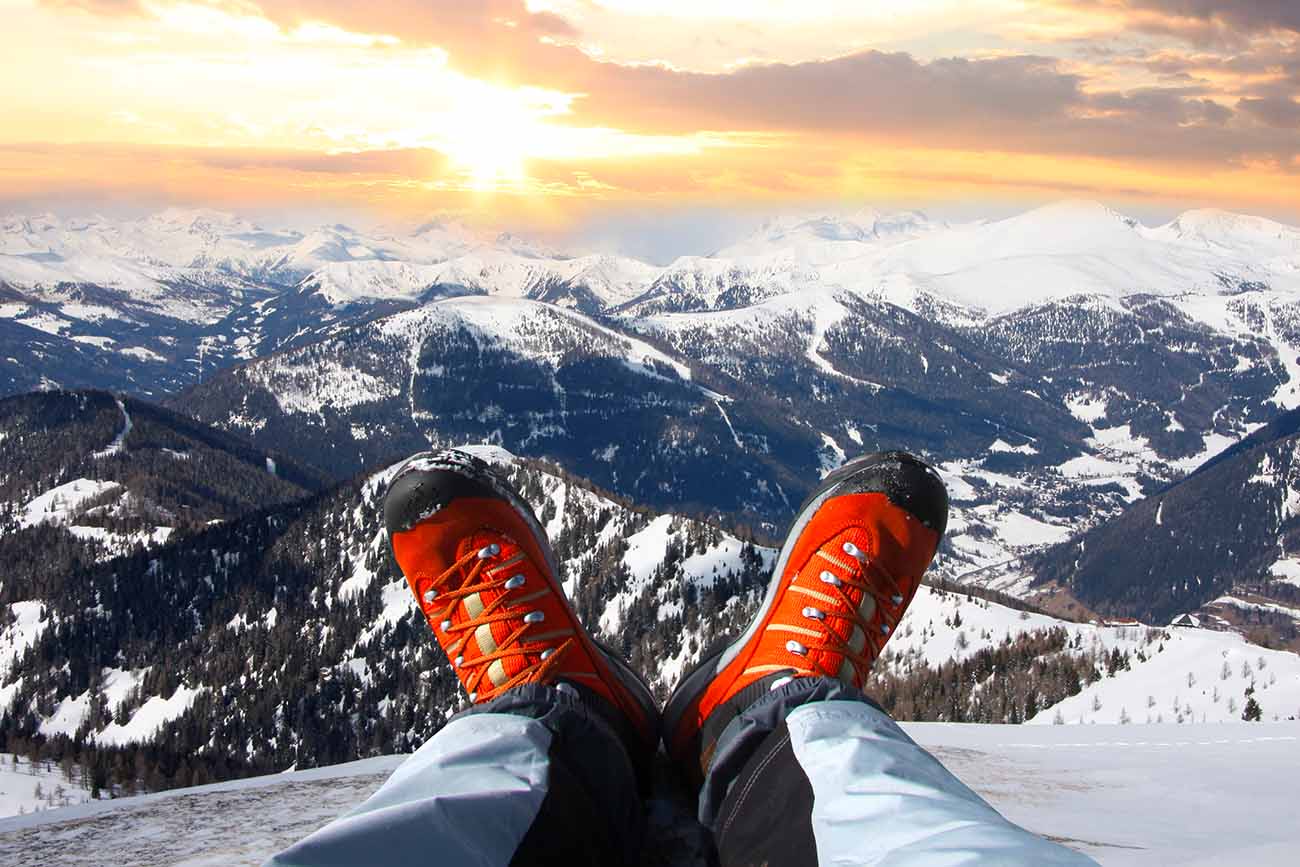
In recent years, extreme tourism in Ukraine has become very popular among strong-minded and adventurous travelers. From rock climbing to water sports, Ukraine has a lot to offer those looking for a dose of adrenaline and unforgettable experiences. Let's take a look at the biggest destinations and activities of extreme tourism in Ukraine.
Mountain biking in the Carpathians
The Carpathians are an ideal place for mountain biking. Thanks to a wide range of routes for different levels of experience, both beginners and professionals can find something for themselves. Go to the highest mountains of Ukraine and experience the wildlife of the Carpathians.
Winter extreme: freeride and rock climbing
The winter season in Ukraine opens up endless opportunities for fans of extreme tourism. Freeride in the Carpathians and glacier climbing offer incredible experiences and unforgettable moments.
Fun rafting on the Dnipro river
The Dnipro is the most majestic river in Ukraine, and it invites you to have fun rafting. Feel the adrenaline as you pass the fun rapids and enjoy the incredible views from the banks.
Paragliding
If you dream of flying into the sky and feeling the freedom of a bird, paragliding is for you. Many of the mountain peaks in the Carpathians are ideal for paragliding, and experienced instructors will help you realize this dream.
Starry nights in the Carpathians
The Carpathians are famous for their incredible nights, where thousands of stars bloom in the dark sky. Go on a night hike and discover the magic of the starry sky.
Traveling on ATVs and Jeeps in the mountains of Ukraine
The Ukrainian mountains provide ideal conditions for exciting ATV and Jeep trips. This form of recreation allows you to get unforgettable emotions while exploring the beauty of wildlife and the most remote corners of the mountain ranges.
Let extreme tourism in Ukraine become your next adventure challenge. Choose one of these activities and feel the adrenaline as you touch the unexplored corners of our country. Ukraine is ready to welcome you and give you the best emotions!

- +380937492554
- [email protected]
No reservations are available
- Ukraine war
- Russia-Ukraine invasion
Latest news bulletin | September 21st – Evening
Israeli strike on school in Gaza kills at least 22
80th anniversary of Operation Market Garden commemorated near Arnhem
Ukraine launches over 100 drones into Russia
- Europe News
- my europe Series
- This will impact your life
- Europe Decoded
- Unreported Europe
- Brussels, My Love?
- Uncovering Europe
- State Of The Union
- Smart Regions

Radio Schuman
This is Radio Schuman, your new go-to podcast to spice up your weekday mornings with relevant news, insights, and behind-the-scenes from Brussels and beyond.
- The Global Conversation
- Euronews Witness
- Euronews Debates
- Top News Stories Today

No agenda, no argument, no bias, No Comment. Get the story without commentary.
- Business Planet
- Global Japan
My Wildest Prediction
- Real Economy
- Start Me Up
- The Dialogue
The Big Question
- The Exchange

Dare to imagine the future with business and tech visionaries

From entrepreneurs to world leaders and academics, we discuss what makes them tick and see the bigger picture of what’s going on in the world of business.
Euronews Tech Talks
- Hacker Hunter

Euronews Tech Talks goes beyond discussions to explore the impact of new technologies on our lives. With explanations, engaging Q&As, and lively conversations, the podcast provides valuable insights into the intersection of technology and society.
- Eco-Innovation
Climate Now
- Ocean Calls
- The Road To Green
Water Matters

Europe's water is under increasing pressure. Pollution, droughts, floods are taking their toll on our drinking water, lakes, rivers and coastlines. Join us on a journey around Europe to see why protecting ecosystems matters, how our wastewater can be better managed, and to discover some of the best water solutions. Video reports, an animated explainer series and live debate - find out why Water Matters, from Euronews.

We give you the latest climate facts from the world’s leading source, analyse the trends and explain how our planet is changing. We meet the experts on the front line of climate change who explore new strategies to mitigate and adapt.
- Health news
- Smart Health
- Culture news
- Food and Drink
- Crossing Cultures
- Cry Like A Boy
- Inspire Saudi
- Meet The Locals
- Melting Pot Culture
- The Kitchen
- The Star Ingredient
- Travel News
- Destinations
- Experiences
- Conscious Travel
- Golf Travel Tales
- Notes From The Usa
- Soul Of The South
- Women Beyond Borders
- Depth of Field
- The New Uzbekistan
- Azerbaijan Diary
- Discover Algeria
- Discover Türkiye
- Discover Sharjah
- Explore Azerbaijan
- Powering Progress
- Better Connected
- Classic Piano Competition
- Digital Garden City Nation
- Experience Brazil
- Galaxy Brain Investor
- Explore Kerala
- Ron Barceló
- Securing the future
- Wine of Moldova
- Job offers from Amply
- Messaging apps
- Widgets & Services
35 years since its nuclear disaster, Chernobyl prepares for tourist influx
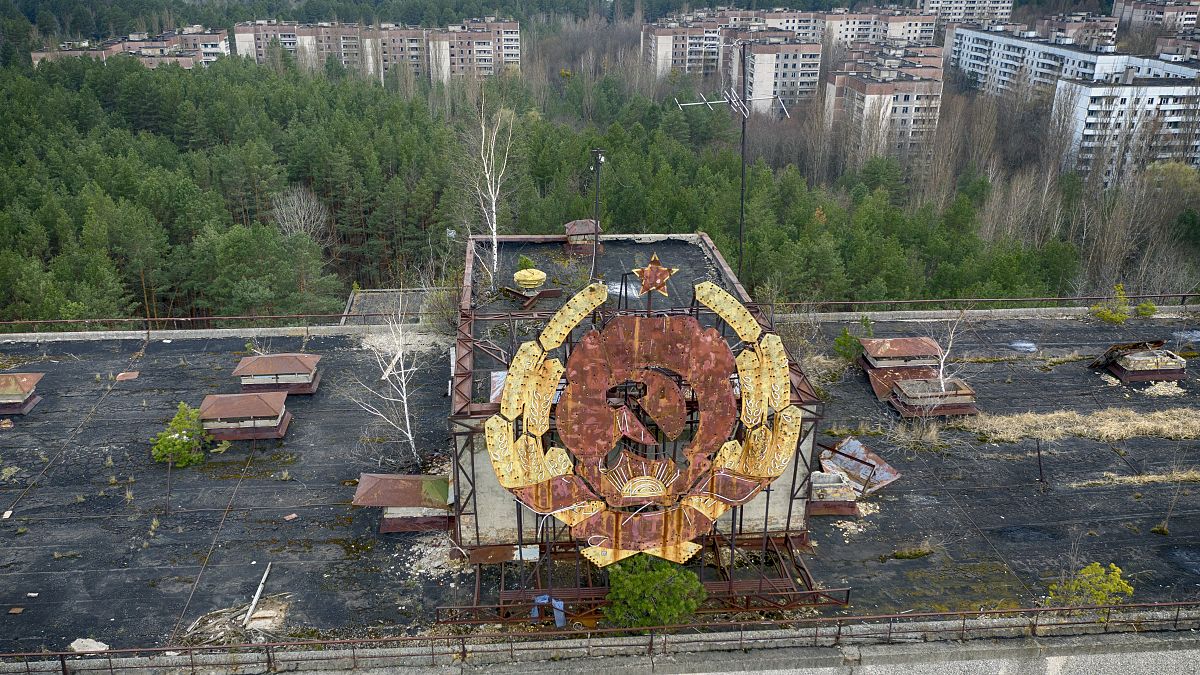
Ukraine's authorities hope that Chernobyl can be a monument not just to human error, but the ability to move on.
In the 35 years since the nuclear disaster at Chernobyl, the nearby main thoroughfare in Pripyat, Ukraine, has been taken over by plants, trees and wildlife.
Abandoned hours after the meltdown of the Soviet nuclear reactor in 1986, the town that once housed workers of the nuclear plant and their families has existed ever since as an eerie ghost town.
But now its central boulevard has been cleared of trees and shrubs, and even reconnected to the electricity grid. In 2020, the former residents of this once-thriving town visited it for the first time to mark five decades since it was first established in the then-Soviet Union.
While only a trickle of hardy tourists have made their way to Chernobyl and its environs over the last decade, the Ukrainian authorities believe this could soon turn into a stream - if not a flood.
HBO mini-series
Public awareness of what happened at Chernobyl 35 years ago on April 26 has been heightened by a popular and critically-acclaimed HBO mini-series about the disaster and its aftermath.
Mass tourism would not only help to keep the events of Chernobyl alive, the Ukrainian authorities believe, but also bring in cash to help with further restoration work.
As well as the restoration in Pripyat, the government plans a new museum showcasing rescue equipment used during the clean-up more than three decades ago.
In the aftermath of the world’s worst ever nuclear disaster, some 350,000 people were relocated from the region surrounding Chernobyl. A new town, Slavutich, was established to house plant workers and scientists around 30km from the site of the explosion.
But the Chernobyl Exclusion Zone remains a vast, empty monument to the massive human errors committed by the Soviet authorities 35 years ago, which led to Reactor No. 4 exploding, catching fire and then spewing radioactive material into the atmosphere.
The Soviet authorities attempted to keep the disaster quiet. The wider world only learned something had happened at Chernobyl after radiation levels were detected as far north as Sweden. In Kyiv, residents were initially not told about the meltdown, which occurred just 65 kilometres to the south.
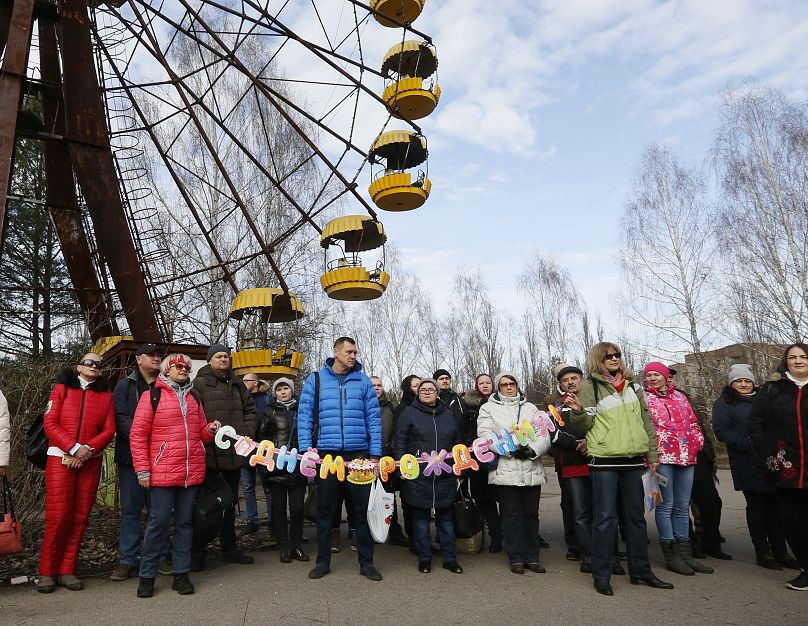
The reactor was initially housed inside a huge sarcophagus, which as recently as 2019 was still leaking radiation. That year, it was finally encased in an arch-shaped shelter. Inside, robots continued the painstaking process of dismantling what remained of the reactor.
Only now are officials Ukrainian officials comfortable in suggesting that, eventually, the exclusion zone, Prypat and even the entombed reactor could become a tourist destination: a monument not only to mankind's past mistakes, but to its ability to pick itself up and carry on.
“Our tourism is unique; it is not a classic concept of tourism,” said Bohdan Borukhovskyi, Ukraine's deputy environment minister.
"This is an area of meditation and reflection, an area where you can see the impact of human error, but [where] you can also see the human heroism that corrects it.”
The airing of the HBO series saw tourist numbers double in 2019, authorities say, before the COVID-19 pandemic had brought it to a complete halt by the middle of 2020. When the pandemic recedes, officials hope that they can harness Chernobyl’s tourist potential.
Hence the work in Pripyat, where as well as vegetation-clearing and electrification, the authorities plan to construct set paths through the ruins so tourists can take in sights such as the city’s abandoned swimming pool and amusement park.
- Off the beaten track: A guide to all of the countries in Europe you might have missed
- Live volcanoes and frozen lakes: These are Europe's most dangerous hotels for daredevils
- Chernobyl: Why the nuclear disaster was an accidental environmental success
Thriving wildlife
All four of the plant's reactors are in the process of being dismantled, but this work in itself will not be completed until 2064 at the earliest. Parts of the site could be radioactive for centuries but levels are now low enough for tourists to safely visit and for scientists to carry out their work.
Ukraine still forbids long-term habitation inside the zone, although about 100 people - mainly elderly former residents - are thought to have defied the order and continue to live there.
The absence of humans has led to the flourishing of wildlife, with bears, bison, wolves, lynx, wild horses, and dozens of bird species living around the site. It has also attracted scientists, who welcome the opportunity to study how animals respond to the relative absence of human development.
“This is a gigantic territory... in which we keep a chronicle of nature,” said biologist Denis Vishnevskiy, 43, who has been observing nature in the reserve for the past 20 years. “The exclusion zone is not a curse, but our resource ”
Now Ukraine is looking to have the exclusion zone listed as a UNESCO World Heritage Site.
“Chernobyl should not become a wild playground for adventure hunters,” Ukrainian Culture Minister Oleksandr Tkachenko told AP.
“People should leave the exclusion zone with the awareness of the historical memory of this place and its importance for all mankind.”
You might also like
For Ukraine's female soldiers, armed conflict is not the only danger
The most striking images from this week's top stories
Chernobyl anniversary: what's the future of nuclear energy in the EU?

- Skip to main content
- Keyboard shortcuts for audio player
War has decimated tourism in Ukraine, but people are still determined to travel

Ashley Westerman
The Carpathian Mountains are a wildly popular domestic getaway spot for Ukrainians in the summer. But Russia's invasion has deeply affected the tourism industry there this year.
Copyright © 2022 NPR. All rights reserved. Visit our website terms of use and permissions pages at www.npr.org for further information.
NPR transcripts are created on a rush deadline by an NPR contractor. This text may not be in its final form and may be updated or revised in the future. Accuracy and availability may vary. The authoritative record of NPR’s programming is the audio record.
A travel company is advertising trips to Ukraine so tourists can see what it's like to live in the middle of a war zone
- Tourism site, Visit Ukraine, is providing tours of war-torn cities in Ukraine.
- The site says visitors can see shelled buildings, bomb debris, and destroyed military gear.
- Ukraine is currently under a "Level 4: Do not travel" advisory due to the ongoing war with Russia.

A travel company is inviting tourists to visit Ukraine and see what it's like to live in the midst of war.
Last month, the online site Visit Ukraine began offering guests guided tours in Ukraine, including expeditions through Kyiv, Bucha, Irpin, and Kharkiv - all cities directly impacted by Russian forces.
Visit Ukraine's CEO Anton Taranenko told Insider that the company has provided several dozen tours since the site was updated and booked more than 200. Much of the interest has come from Ukrainians who were displaced during the war or had moved to other countries earlier on. Though, over a dozen Americans have booked tours as well, he said.
Ukraine is currently under the highest travel advisory level due to the ongoing conflict with Russia. The US Department of State has urged all US citizens to exit the country immediately and has warned it will not be able to assist Americans in Ukraine.
The tourist site has not received any official approval from Ukrainian government. While it is not recommended, it is still technically possible to enter Ukraine through several locations in Europe.
'Brave Cities'
The site says that people who sign up for "Brave City" tours will be able to see shelled buildings, bomb debris, and destroyed military equipment. Travelers still could face risks of active land mines and air raids.
Taranenko said Kyiv is the safest city to visit as many people have resumed normal activities, but admits it's not "100% safe."
Taranenko told Insider he doesn't see the tours as any more risky today than millions of tourists' visits to Chernobyl before the war began.
Visit Ukraine tours are typically comprised of about 10 people led by a guide and take about 3-4 hours. The tour guides act as translators and guards, providing detailed instructions on avoiding land mines and information on where to go if air raid sirens sound.
Ultimately, Taranenko said a tourist's safety depends on how closely they are willing to follow directions. In Bucha, where bombs could explode at any time , failing to follow directions could mean death.
Related stories
"For example, when we'd take people to Chernobyl the guide would tell them: 'Listen, do not go this way or that way because then you will be exposed to more radiation,'" Taranenko said. "But, people will still do whatever they want."
The CEO said that while for many the tour is about reconnecting with their country, for others, it's a matter of "dark tourism."
"Some like that bit of dangerous," Taranenko said. "There are always those type. They want to see it in real life."
'It's not all what you see on TV'
On the website, the company appears to lean into this narrative.
In a list of the reasons to take a tour through Bucha and Irpin, the site says visitors will be able to see the results of "the most massive civilian massacres that took place during the Russian attack on Ukraine."
The site also provides other tours including "Nature" and "Family Tours." Meanwhile, other areas, including Mariupol and Mykolaiv, are completely off limits for tourists as they are either under Russian control or suffering continuous attacks from Russian forces.
Ultimately, Taranenko said the site is about showing the brave spirit of the Ukrainian people. He said the funds from the tours, which cost about €50 per person, support war refugees.
"We show the brave, strong people living in Ukraine. You can feel the atmosphere," he said. "It is not all what you see on TV. We are just people living our lives with hope that the war will soon be over."
"If tourists can come to Ukraine, enjoy our amazing city, and tell friends about it, maybe, they too will understand the pride we have in our country, our independence," Taranenko added.
- Main content
- Russia & Former Soviet Union
- RT Features
- Entertainment
Ukraine conflict damaging EU tourism
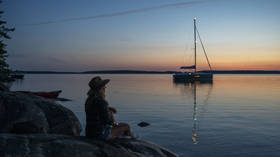
The conflict between Moscow and Kiev has severely affected EU tourism in a market that was recovering from the Covid-19 slump, a major report shows.
The loss of Russian and Ukrainian tourists, a drop in consumer confidence, and increased travel costs, all stemming from the conflict, have severely hit some of the bloc’s tourist destinations, according to a major European Travel Commission (ETC) study published in September.
Prior to the outbreak of the Ukraine conflict in February 2022, Russian and Ukrainian outbound tourism accounted for 3% ($14 billion) of global spending in the industry, the study says. In Europe, Russian tourists made up 10-20% of incoming business in neighboring countries such as Latvia, Lithuania, Estonia, Finland, and Moldova, as well as coastal destinations like Türkiye, Montenegro, and Cyprus.
Cyprus, the report notes, has suffered especially, losing nine-tenths of its Russian tourists – its second biggest market – and entirely losing the Ukrainian market. Finland lost its biggest tourist market in Russian tourists, causing “extreme difficulties for businesses, especially in the eastern part of the country,” the report says. Bulgaria similarly lost two of its priority markets, Russian and Ukrainian tourists.
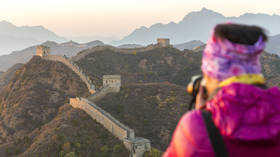
The wider impact of the conflict was felt in slower economic growth, higher inflation, interest rates, higher oil prices, and the resulting hike in transportation costs, the report suggests. This was accompanied by lower demand for Europe as a travel destination due to the area being perceived as unsafe, especially for US and Canadian tourists, it adds.
Prior to the Ukraine conflict and the Covid-19 pandemic and subsequent travel limitations, Europe was the most popular tourism destination for Russians, official statistics show. Finland and Estonia were the most popular EU destinations for Russians in 2019, followed by Germany, Italy, and Poland, according to outbound border crossing statistics from the Federal Security Service (FSB), as quoted by the media.
Russians have traveled to Europe 13 times less in the first half of 2024 than in a similar period in 2019, recent FSB statistics suggest.
These statistics do not only include tourist trips, and do not include Russians arriving via other countries.
After the Ukraine conflict began, the European Council fully suspended the Visa Facilitation Agreement it had with Russia. This complicated the visa application process for Russians and made it more expensive. Some European states have stopped giving tourist visas to Russians entirely.
Top stories

RT News App
- Applications
- Where to watch
- Sponsored content
- Terms of Use
- Privacy policy
- RT Promo: Hall of Fame
- Contact info
- Feedback & Complaints
© Autonomous Nonprofit Organization “TV-Novosti”, 2005–2024. All rights reserved.
This website uses cookies. Read RT Privacy policy to find out more.

IMAGES
VIDEO
COMMENTS
Extreme Tourism Company: With treatment like this, they're practically *begging* Russian tourists to post bad Yelp reviews! Also: It's cool to see the care the Ukrainian sniper-helper-guy showed passing The Special Bullet™ to the sniper, then rezipping the bag. Meanwhile, Russians store artillery in loose piles on dirt.
In an accompanying post Extreme Tourism Company attributed the footage, which appears to have been filmed from a drone, to Ukraine's 67 th Brigade. They claim both the tank and soldier were ...
Tomaž Rotar knows a thing or two about life and death in extreme environments. In February 2021, the Slovenian oral surgeon was sitting inside a cramped tent 7,300m up K2, the world's second ...
A new TV series has spurred travel to the Chernobyl nuclear disaster site in Ukraine and has renewed debate over the ethics of so-called dark tourism to locations associated with death and ...
Back from a two-week visit to Kyiv, I recommend those interested in history and politics to visit Ukraine's central and western regions. Be in no doubt, this carries some risks, be your trip private or professional. But going to a war-torn country is more than extreme tourism; it allows a close view of what's happening and shows solidarity ...
Adventure tours in Ukraine is a young team of professionals with a background in the tourism and service sectors. We are working to provide experiences in emerging niche fields of tourism in Ukraine such as military and extreme sports tourism. Our number one goal is to provide clients with rewarding experiences.
The winter season in Ukraine opens up endless opportunities for fans of extreme tourism. Freeride in the Carpathians and glacier climbing offer incredible experiences and unforgettable moments. Fun rafting on the Dnipro river. The Dnipro is the most majestic river in Ukraine, and it invites you to have fun rafting.
Ukraine's authorities hope that Chernobyl can be a monument not just to human error, but the ability to move on. In the 35 years since the nuclear disaster at Chernobyl, the nearby main ...
Extreme tourism company an offshoot of super fun time LLC Reply reply Epitrochoid- • Orcs and Swine are so closely related I wonder if any Texas hog infestation management guys could head to Ukraine and help with their infestation too. ... Consgress speaker Johnson, thinks that Ukraine should be allowed to strike targets in rusia with US made ...
Dark tourism takes to the sky above Chernobyl. By Pavlo Fedykovych, CNN. 5 minute read. Updated 9:19 AM EDT, Wed April 21, 2021. Link Copied! Dark decline: Despite this, the pandemic has put its ...
Charlie McGrath, owner of Objective Travel Safety, a UK-based company that trains people for war zones, says even areas of Ukraine that appear to be safe can pose a real risk. "I invite extreme ...
Extreme_tourism_company. 10 178 subscribers. Канал бійців спецпідрозділу 🇺🇦. Викладаємо кадри роботи групи, ділимося бойовим досвідом, аналізуємо події фронту, країни та світу. Канал буде корисним для ...
10-12 hours. Chernobyl one-day scheduled tour from Kyiv Overview Take a break from the polished streets of Kyiv and travel back in time…. Free cancellation. Recommended by 94% of travelers. from. $110. per adult. 2. Full-Day Private Tour to Chernobyl and Pripyat Town from Kyiv.
The company has a reported backlog of 800 customers for the roughly 90-minute up-and-back flights, most of whom have paid between $250,000 and $400,000 for their tickets.
War has decimated tourism in Ukraine, but people are still determined to travel The Carpathian Mountains are a wildly popular domestic getaway spot for Ukrainians in the summer. But Russia's ...
CNN —. The Covid pandemic caused the Hotel Leopolis in Lviv, Ukraine, to close for two months in 2020. Yet, since then, and a little more than a year after Russia invaded, the Leopolis has ...
A travel company is advertising trips to Ukraine so tourists can see what it's like to live in the middle of a war zone. Grace Kay. Aug 15, 2022, 5:29 AM PDT. An aerial view of a damaged area ...
Prior to the outbreak of the Ukraine conflict in February 2022, Russian and Ukrainian outbound tourism accounted for 3% ($14 billion) of global spending in the industry, the study says. In Europe, Russian tourists made up 10-20% of incoming business in neighboring countries such as Latvia, Lithuania, Estonia, Finland, and Moldova, as well as ...